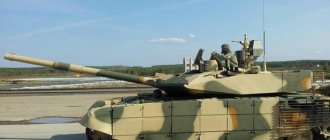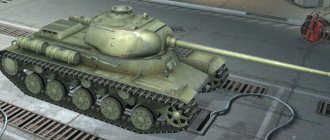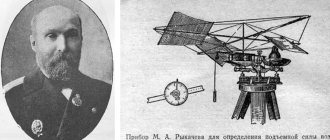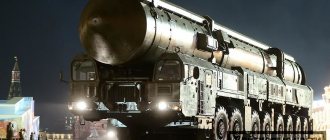Classification
Mines installed in the waters were divided according to the method of installation, according to the operation of the fuse, according to the frequency of occurrence, according to the method of control, and according to selectivity.
According to the installation method, there are anchor, bottom, floating-drifting at a certain depth, homing torpedo type, pop-up.
According to the method of triggering the fuse, ammunition is divided into contact, electrolyte-impact, antenna-contact, non-contact acoustic, non-contact magnetic, non-contact hydrodynamic, non-contact induction and combined.
Depending on the frequency, mines can be multiple or multiple, that is, the detonator is triggered after a single impact on it or a set number of times.
Based on controllability, ammunition is divided into guided or unguided.
The main installers of sea minefields are boats and surface ships. But mine traps are often set by submarines. In urgent and exceptional cases, minefields are also made by aviation.
MDM-3 mod.1
Main characteristics | Values |
| Caliber (diameter), mm | 450 |
| Length, mm | 1525, 1580* |
| Weight, kg | 590 (with trolley), 525* |
| Explosive mass in TNT equivalent, kg | 300 |
| Depth of installation site (min), m | 8 |
| Depth of installation site (max), m | 30 |
| Maximum media speed during installation: - NK, unit. — LA, km/h | 15 1000 |
| Duration of combat service at position, years, not less | 1 |
| Service life, years, not less | 10 |
* - aviation version
First confirmed information about anti-ship mines
At various times, in coastal countries engaged in various military operations, the first simple means of anti-ship warfare were invented. The first chronicle mentions of sea mines are found in the archives of China in the fourteenth century. It was a simple tarred wooden box containing an explosive and a slow burning fuse. Mines were launched along the water flow towards Japanese ships.
It is believed that the first sea mine, which effectively destroys the hull of a warship, was designed in 1777 by the American Bushnell. These were barrels filled with gunpowder with impact fuses. One such mine struck a British ship off Philadelphia and completely destroyed it.
First Russian developments
Engineers, subjects of the Russian Empire, P. L. Schilling and B. S. Jacobi, took a direct part in improving existing models of sea mines. The first invented electric fuses for them, and the second developed the actual mines of a new design and special anchors for them.
The first Russian ground mine based on gunpowder was tested in the Kronstadt area in 1807. It was developed by the cadet school teacher I. I. Fitzum. Well, in 1812, P. Schilling was the first in the world to test mines with a non-contact electric fuse. The mines were powered by electricity supplied to the detonator by an insulated cable that was laid along the bottom of the reservoir.
During the war of 1854-1855, when Russia repelled the aggression of England, France and Turkey, more than a thousand mines of Boris Semenovich Jacobi were used to block the Gulf of Finland from the English fleet. After several warships were blown up on them, the British stopped their attempt to storm Kronstadt.
You need to cut the red wire
Fragment of the film "Fight Club"
Typically in popular culture, the process of defusing a mine or bomb looks like this. The sapper carefully picks at her insides, while the others shift excitedly from foot to foot. Then the professional finally gets to the wiring hidden in the depths of the explosive device. He cuts the red and the device is deactivated.
If this solution seems too obvious to you, remember: the enemy knew that you would think so. So don't touch the blue wire. Cut the red one!
In reality, P.F. Bubnov and I.P. Sukhov do not exist. Means of initiation. A short course on no official regulations on how and what elements to mark in explosive devices. Normal mines are not equipped with any colored wires, puzzles, or even dials that count down to the explosion. Instead of all this goodness, there is an ordinary mechanical or chemical detonator. The goal of the designers is to make it difficult to neutralize the projectile, and not to test the skills of the sapper.
At the turn of the century
By the end of the 19th century, the sea mine had already become a reliable device for destroying the armored hulls of warships. And many states began to produce them on an industrial scale. The first mass installation of minefields was carried out in China in 1900 on the Haife River, during the Yihetuan uprising, better known as the “Boxer” uprising.
The first mine war between states also took place on the seas of the Far Eastern region in 1904-1905. Then Russia and Japan massively laid minefields on strategically important sea lanes.
Delivery options for mine MDM-1 mod.1:
- combat;
- training room for training personnel in the specifics of the production;
- educational-acting or educational-cut-out for studying the structure of the product.
Anchor mine
The most widespread in the Far Eastern theater of operations was the sea mine with an anchor lock. It was kept submerged by a mine rope attached to an anchor. The immersion depth was initially adjusted manually.
In the same year, Lieutenant of the Russian Navy Nikolai Azarov, on the instructions of Admiral S. O. Makarov, developed a design for automatically immersing a sea mine to a given depth. I attached a winch with a stopper to the ammunition. When the heavy anchor reached the bottom, the tension of the cable (minrep) weakened and the stopper on the winch was activated.
The Far Eastern experience of mine warfare was adopted by European states and widely used during the First World War. Germany has achieved the greatest success in this matter. German sea mines closed the Russian Imperial Fleet in the Gulf of Finland. Breaking this blockade cost the Baltic Fleet heavy losses. But the sailors of the Entente, especially Great Britain, constantly set mine ambushes, closing the exits of German ships from the North Sea.
World War II naval mines
During the Second World War, minefields turned out to be very effective and therefore very popular means of destroying enemy naval equipment. More than a million mines were laid across the sea. During the war years, more than eight thousand ships and transport vessels were blown up and sank there. Thousands of ships received various damages.
Sea mines were laid in different ways: a single mine, mine banks, mine lines, and a mine strip. The first three methods of mining were carried out by surface ships and submarines. And planes were used only to create a mine strip. The combination of individual mines, cans, lines and mine stripes creates a minefield area.
Nazi Germany thoroughly prepared to wage war on the seas. Mines of various modifications and models were stored in the arsenals of naval bases. And German engineers took the lead in the design and production of revolutionary types of sea mine detonators. They developed a fuse that was triggered not by contact with the ship, but by fluctuations in the Earth's magnitude near the steel hull of the ship. The Germans dotted all the approaches to the shores of England with them.
Wonder weapon of the German fleet
With the outbreak of naval warfare during World War II, the German Navy had some nasty surprises in store for its adversaries. One of them was bottom-based non-contact torpedo bombs, which submarines placed off the coast of Great Britain. From now on, merchant ships and warships faced death, lurking at the bottom near ports and military bases. The first mine installations bore fruit. The most effective deployment was the barrage at Orford on the south-east coast of England, set up by the German submarine U 13 a few hours after Great Britain declared war on Germany. For some time, the Kriegsmarine's opponents were powerless in the fight against their magnetic mines.
The emergence of a miracle weapon
Before the start of the war, the Kriegsmarine had very effective mine weapons. According to naval experts, the enemy was supposed to remain helpless in front of German mines for some time. That is why mine laying had to be carried out immediately on a large scale - before the enemy learned to cope with them. The submarine could deploy bottom proximity mines through torpedo tubes without using special equipment for this. Torpedokalibermine) for service in 1917
), which became the prototype of the Kriegsmarine torpedo.
Loading a torpedo bomb into the compartments of U 561. Mediterranean Sea, 1942.
ww2aircraft.net The need for such weapons arose among the Kaiserlichmarine after the department was faced with the problem of laying minefields in areas inaccessible to underwater minelayers. These submarines did not have sufficient autonomy to lay mines at distant ports. Therefore, the idea arose to create a mine for large submarine cruisers without equipping them with mine shafts, like specially built boats.
“TEKA-Mina” was a cylinder 2 m long and 50 cm in caliber. The submarine could deploy it through a torpedo tube. However, at that time, technologies were not yet available that would make it possible to make a mine ground-based and non-contact. Therefore, “TEKA-Mina” was anchored, that is, it was attached with a cable to an anchor lying on the bottom.
Thanks to the creation of such a miracle weapon, German submarine cruisers began to mine African and American ports in 1918. The first torpedo bombs were deployed off Dakar in April of the same year, and their biggest success was the death of the US Navy armored cruiser San Diego. The submarine U 156, captain-lieutenant Richard Feld, installed 14 mines of this type off New York in mid-July. It is believed that they could have caused the death of the cruiser, which exploded and sank on July 19, 1918.
The Treaty of Versailles prohibited the German navy from having submarines of any kind. However, the sailors continued to develop mine weapons for them. The Navy was especially interested in the possibility of creating bottom mines with a non-contact magnetic fuse. This idea arose during the First World War, but its implementation began only after the end of the war.
The fleet turned to Professor Bestelmeyer, who was working on the creation of a magnetic torpedo fuse, for help, and he responded to the request. Some of the ideas he proposed turned out to be successful. After a series of experiments and tests, the Reichsmarine received two magnetic torpedo bombs in 1931:
- Type TMA (Torpedomine Anker) is an anchor non-contact mine, the prototype of which was the TEKA-Mina. Length - 3.46 m, total weight - 880 kg, explosive weight - 270 kg;
- Type TMB (Torpedomine Boden) is a bottom non-contact mine with the following characteristics: length - 2.3 m, total weight - 750 kg, explosive weight - 550 kg.
Submarines could use both types of torpedo bombs, since they were created for 533-mm torpedo tubes.
"TEKA-Mine", delivered by the submarine cruiser U 153 in September 1918 at the entrance to Halifax Harbour. It had four fuses.
Torpedoes or mines?
Even before the outbreak of World War II, discussions broke out in the Kriegsmarine about what was better to use for submarines: mines or torpedoes? Proponents of mine weapons believed that they had many advantages. Although TMV mines could be used at depths of up to 25–35 m, they would be effective against merchant shipping and warships and in the coastal zone - for example, when mining approaches to naval bases, at the entrances to canals or harbors. Since it would be difficult for a submarine to use torpedoes and stay in such areas for a long time due to the active enemy presence and navigation difficulties, mines became a real lifesaver. The submarine could unnoticed place them, and the mines would remain unnoticed until the first explosions. If successful, the enemy port or base would temporarily become closed until the mine danger was overcome.
In addition, the active use of mines in winter had its advantages, because long nights and bad weather were not conducive to torpedo attacks. This was especially true for submarines with little autonomy, since at this time their chances of returning from a cruise with unexpended torpedoes increased. It was also believed that during the campaign it was necessary to combine mine laying with torpedo attacks. That is, the submarine going out for mining should also have had a certain supply of torpedoes in order to begin using them after completing work with mines.
As a result, the Kriegsmarine command came to the following decision: there was no point in laying mines along the enemy coast until shipping traffic and navigation restrictions in the areas of its activity were studied. Mines were recognized as an effective weapon, but the use of torpedoes was a priority, and mining of coastal waters was to be carried out as needed.
Loading a torpedo bomb into the compartment of U 373 before it goes to sea to mine the US coast. 1942
In the event of the outbreak of an armed conflict with Great Britain, the headquarters of the German Navy considered it advisable to begin mining the waters off the southeast coast of England, where important ports were located before entering the English Channel. He assigned this role to small boats of the II series, which were capable of taking on board from nine to twelve TMV mines. In advance, even before the attack on Poland, Germany brought its submarines to positions in the North Sea. By September 3, 1939, there were 15 boats - one “seven” and fourteen “twos”. Five “twos” were located off the southeast coast of England, ready to begin mining it. Two more small boats were moving to the position, having the same task. One of these seven “minzags” was the “two” U 13 of Captain-Lieutenant Karl Daublebski von Eichgmein.
Mines at Orford
U 13 left Wilhelmshaven after midnight on 2 September with nine TMB mines and three torpedoes on board. Its commander was ordered to reach a position off the English coast in the Orford area and await further orders there. The need to act secretly caused trouble for the crew of the “deuce”. During the daytime, the boat was forced to make five urgent dives, evading various ships, and spent almost the entire daylight hours under water. Only at half past four in the morning on September 3 did she reach the border of the desired area.
At dawn, U 13 sank and remained submerged until 14:34. Then the “two” surfaced, and half an hour later went under water again. As a result, she received the signal “Start military operations against England immediately.”
from 13:10 with a delay of five hours. Having received the radio operator's report, Daublebski von Eichgmein ordered the torpedoes to be removed from the tubes and mines loaded into them.
German "two" U 13 at sea. Pre-war photo.
The boat then headed towards the Aldeburgh light buoys, which continued to burn, although the Germans had expected them to go dark at the outbreak of war. Such kindness from the enemy spared Daublebski von Eichgmein from navigational difficulties. The boat sailed calmly along the English coast, skirting sunken ships marked with buoy lights. By one o'clock on the morning of September 4 the lights of the Orford and Southwold lighthouses appeared, and an hour later U 13 approached Orfraud Ness, where the first lighthouse stood. She sank and, entering a deep channel, began laying mines.
At first, the death cylinders fell to the bottom at intervals of five minutes (about 500 m from each other). The boat laid the last three mines at longer intervals: from six to ten minutes. By 04:45 everything was finished, and the “two” began to leave the position underwater. Moving further away, Daublebski von Eichgmein put the submarine on the ground to give the crew a rest. U 13 appeared on the surface only after noon. But soon she had to urgently dive to avoid the appearing planes. Until evening, the boat dived three more times for various reasons.
Having moved away from the enemy coast, Daublebski von Eichgmein sent a message to headquarters about the completion of the task. Having received no confirmation, he repeated his message twice more. The headquarters was silent. When the boat was sending radiograms, two English destroyers suddenly appeared in the distance. But the Germans failed to attack them: the targets were moving quickly at a great distance from the “two”.
The German submarine cruiser U 151 is the first submarine in the world to lay mines through torpedo tubes underwater in combat conditions. Delaware Bay (USA), May 27, 1918.
All night from September 4 to 5, U 13 sailed on the surface, charging the battery. At dawn, finding herself in an area of busy shipping, she went under water. Having no orders, Daublebski von Eichgmein did not attack anyone. The submarine continued to observe the secrecy regime and by midnight on September 6 it arrived in the area of the mouth of the Yade River, where it exchanged signals with the patrol ship.
But the sea did not let the boat go without trouble. Due to the darkness, the lights of the buoys and beacons were difficult to see. As a result, at 00:20 Daublebski von Eichgmein ran the submarine aground. It took the crew an hour to remove it. U 13 arrived in Wilhelmshaven at half past one in the morning. Returning to the base, its commander reported to Karl Dönitz about the successful completion of the mission. All that remained was to wait for the mines to go off.
Mines and their victims
In addition to U 13, three more submarines laid mines on September 4–5: U 15, U 16 and U 17. They littered the coastal waters off Ortford, Hartpool, Flamborough and Dover with thirty-five TMBs, which destroyed six English and French ships with a total tonnage of 16,000 gross The minefield at Orford turned out to be the most effective.
Steamship "Magdapur". shipsnostalgia.com
On the evening of September 10, the large English ship Magdapur (8,641 GRT) was killed by U 13 mines. Six days later, the passenger steamer City of Paris (10,902 GRT) was blown up and damaged there. It did not sink, and tugboats pulled it to the port. And Orford’s last victim was the French coal miner “Frine” (2,660 GRT). It exploded and sank 3.5 miles (6.5 km) from Aldeburgh Lighthouse.
Simultaneously with the first reports of the destruction of ships by mines, Grand Admiral Raeder decided to continue their intensive deployment off the east coast of Great Britain. His headquarters shared the same opinion, which considered it important to mine enemy coastal waters near ports and military bases.
The highest activity in the use of TMV mines in the initial period of the war occurred in November 1939 - January 1940. During the first four months of hostilities, 25 ships with a total tonnage of 107,378 GRT were killed or damaged. The explosions of the battleship Nelson and the cruiser Belfast were a separate success: both ships were damaged and had to undergo repairs. Due to the successful mine laying of U 30 in January 1940, the important English port of Liverpool was temporarily closed.
British passenger steamer City of Paris. Hit mines laid by U 13 off Orford but did not sink. He was rescued by two tugboats, which pulled him to the port.
The end of the German U-boat mine campaign off the British coast came with the Kriegsmarine preparing for the invasion of Norway and Denmark in March 1940. The exact number of magnetic mines laid by submarines off the English coast is unknown, but it is unlikely that it exceeded three hundred. They reaped a decent harvest: during the nine months of the war, 46 ships with a total tonnage of over 200,000 gross tons were killed or damaged by torpedo bombs deployed by submarines.
Blitzkrieg thwarted
For Germany's opponents, its use of such weapons came as a surprise. For example, at the beginning of the war, the British fleet did not have means of protection against magnetic mines. All its minesweepers and equipment were mainly intended to combat anchor contact mines. Goering's pilots provided unexpected assistance to the British. Like the Kriegsmarine, the Luftwaffe was actively involved in mining the coastal waters of Great Britain, dropping mines from aircraft. British admiralty historian Stephen Roskill wrote about this:
“On November 23, the period of wandering and searching for a solution to this problem ended with the discovery of a German mine in the shallow waters of Shoebury Ness, where it was dropped by a German plane. This mine was dismantled at great risk. It was found that the mine explodes under the influence of a change in the vertical magnetic field (...), and the fuse was triggered when a ship built in the Northern Hemisphere and therefore had a north magnetic pole that was directed vertically down passed over the mine.”
A German magnetic mine dropped from an aircraft near Woolwich Arsenal (London). The mine, dropped by parachute, was carried to land, where it landed, crashing into the ground. The photo shows the process of its discharge.
Still, Roskill reluctantly admitted that the Germans managed to take the British by surprise. However, the insignificant pre-war reserves of bottom mines did not allow them to develop their success. And when production was established, the British already had the necessary information to develop a magnetic trawl. Thus, the mine blitzkrieg was thwarted. True, this no longer concerned German submarines. After the victory over France, they received bases in the Atlantic and stopped being involved in mining the waters of the British metropolis.
However, this did not mean the end of the work of German boats with magnetic mines. During the Second World War, they successfully mined British and American ports in Africa and the USA. Separately, it is worth mentioning the waters of the Soviet Arctic, where Dönitz’s submarines in 1943–1944 laid over 400 bottom mines, causing trouble for Soviet shipping and the Northern Fleet. But all the successes of German submarine mine weapons achieved after 1940 cannot be compared with the results of their use in the first half of the war, when magnetic mines still seemed like a miracle weapon.
Vladimir Nagirnyak
/
Lucky Nines of the Kriegsmarine
German submarines type IXB: birth, great successes and finale
- WWII
- fleet
- Germany
- submarines
Vladimir Nagirnyak
/
The first victims of the Red Devil
Successes of the fourth campaign of U 57 in November 1939: the devil with the torch, the hunter among the fishermen and the ruined merchants
- WWII
- fleet
- Germany
- submarines
Vladimir Nagirnyak
/
The submariners of the Luftwaffe
The stories of three Kriegsmarine officers who rose into the sky and then descended under the water
- WWII
- fleet
- Germany
- submarines
Sources and literature:
- NARA T1022 (captured documents of the German fleet).
- Blair, S. Hitler's U-boat War. The Hunters, 1939–1942 / S. Blair. — Random House, 1996.
- Bush, R. Der U-boot-Krieg 1939–1945. Deutsche Uboot-Erfolge von September 1939 bis Mai 1945 / R. Bush, H.-J. Roll. - Band 3. - Hamburg–Berlin–Bonn: Verlag ES Mittler& Sohn, 2001.
- Berr, R. Das Kriegstagebuch der U-Bootwaffe / R. Berr: https://www.ubootwaffe.net.
- Rohwer, J. Axis Submarine Successes of World War Two / J. Rohwer. — Annapolis, 1999.
- Rossler, E. Die Torpedos der deutschen U-Boote / E. Rossler. — Mittler & Sohn GmbH, 2005.
- Roskill, SW War at sea 1939–45 / SW Roskill. — Volume I. The Defensive. - London: HMSO, 1954.
- Ritschel, H. Kurzfassung Kriegstagesbuecher Deutscher U-Boote 1939–1945 / N. Ritschel. - Band 1. - Norderstedt.
- U-Boat War in the Atlantic 1939–1945: German Naval History by Hessler, Günther (editor). - London: HMSO, 1992.
- Wynn, K. U-Boat Operations of the Second World War / K. Wynn. - Vol. 1–2. - Annapolis: Naval Institute Press, 1998.
- Dönitz, K. German submarines in the Second World War / K. Dönitz; lane with him. - M., 1964.
- Morozov, M. Hitler's steel sharks. Series “VII” / M. Morozov, V. Nagirnyak. - M.: Collection, Yauza, Eksmo, 2008.
- https://www.uboat.net
- https://www.uboatarchive.net
- https://historisches-marinearchiv.de
Soviet naval mines
By the beginning of the great sea war, the Soviet Union was armed with mines that were not as technologically diverse as Germany, but no less effective. Only two types of mine anchors were stored in the arsenals. These are the KB-1, which entered service in 1931, and the AG aerial deep-sea mine, mainly used against submarines. The entire arsenal was intended for mass mining.
MDM-2 mod.1
Main characteristics | Values |
| Caliber (diameter), mm | 630 |
| Length, mm | 2250, 2785* |
| Weight, kg | 1300 (without trolley), 1370* |
| Explosive mass in TNT equivalent, kg | 1030 |
| Depth of installation site (min), m | 12 |
| Depth of installation site (max), m | 125 |
| Maximum media speed during installation: - NK, unit. — LA, km/h | 15 1000 |
| Duration of combat service at position, years, not less | 1 |
| Service life, years, not less | 10 |
* - aviation version
Technical means of combating mines
As the sea mine improved, methods were developed to neutralize this threat. Trawling sea areas is considered the most classic. During the Great Patriotic War, the USSR widely used minesweepers to break the mine blockade in the Baltic. This is the cheapest, least labor-intensive, but also the most dangerous method of clearing mines from shipping areas. A minesweeper is a kind of sea mine catcher. At a certain depth, he drags behind him a trawl with a device for cutting cables. When the cable holding a sea mine at a certain depth is cut, the mine floats. Then it is destroyed by all available means.
A sapper makes only one mistake
Sapper in an EOD protective suit.
Image: Bundeswehr‑Fotos / Wikimedia Commons This is a well-known proverb, which, however, is not entirely accurate. Of course, the profession of a sapper is associated with enormous risk and a mistake will cost him dearly. But it is far from certain that a technician who is blown up while working with a shell will die.
Combined arms demining kits were not invented for looks, and they are quite capable of protecting IB Stewart, KL Stewart, CJ Worringham, JT Costello. Physiological Tolerance Times while Wearing Explosive Ordnance Disposal Protective Clothing in Simulated Environmental Extremes / PLOS One of their owners (of course, if we are not talking about an anti-tank charge). There is a known case when one specialist was blown up four times during his career and survived.
In addition, as we have already mentioned, anti-personnel mines are designed by S. Smith, M. Devine, J. Taddeo, VC McAlister. Injury profile suffered by targets of antipersonnel improvised explosive devices: prospective cohort study / BMJ Open to cause severe injury rather than instant kill. And the carelessness of a sapper, with a certain amount of luck, can cost him not his life, but “just” a limb. Although this, of course, is little consolation.











